Brisket is not something you master in a weekend, and with prices climbing, every mistake costs you.
Some mistakes start at the store. Others show up mid-cook, and a few only reveal themselves when you finally slice. Learn how to avoid these mistakes, and you can smoke brisket that rivals your favorite barbecue restaurant, no new gear or complicated tricks needed.
The Most Common Brisket Smoking Mistakes
25. Buying the Wrong Brisket Grade
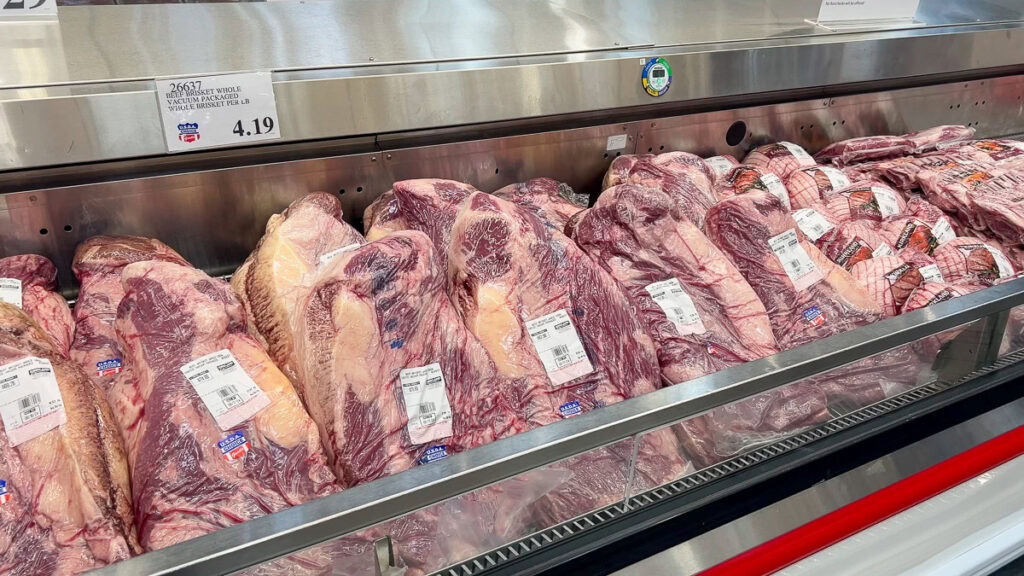
A dry brisket often starts at the store, not at the smoker. Select grade looks fine in the packet, but it lacks the marbling to survive a long cook. The meat tightens, loses moisture, and you are left wondering what went wrong. Fat inside the meat is what renders, breaks down and keeps everything juicy.
Fix it: Opt for Prime-grade brisket if you can afford it, and American Wagyu if you really want the best of the best. Look for fine white flecks inside the meat rather than a giant fat cap on top. Internal marbling is what saves your brisket.
24. Choosing a Flat Instead of a Full Packer
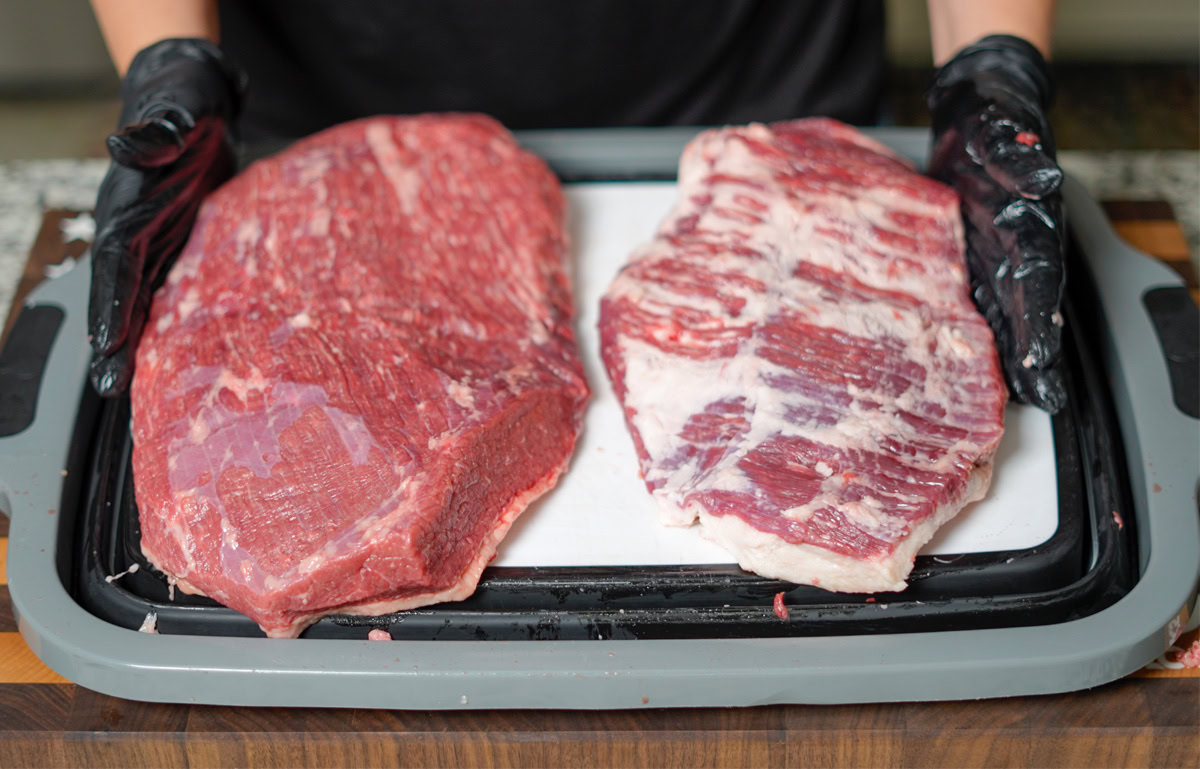
People think a smaller brisket will be easier to smoke, or they think it’s better to practice on something small and inexpensive before trying to smoke a whole brisket.
While it’s possible to smoke a brisket flat, even experienced cooks struggle to keep the lean, unforgiving flat juicy.
Fix it: Buy a full packer brisket. The point gives you extra fat, better protection, and more flavor. You also get more room to trim and more margin for mistakes.
23. Not Giving Yourself Enough Time
Brisket rarely sticks to the timeline you expect. Most first-timers underestimate how long it takes. Then the stall hits, the clock keeps ticking, and panic sets in. This leads to cranking the heat, drying out the flat, or slicing before the rest is complete.
Fix it: Start early and plan a large buffer. You can always hold a finished brisket, but you cannot fix one you rushed. Often, the safest choice is to smoke an overnight brisket. You’ll be done by lunchtime and then can hold until you’re ready to serve.
22. Trimming Too Much or Too Little
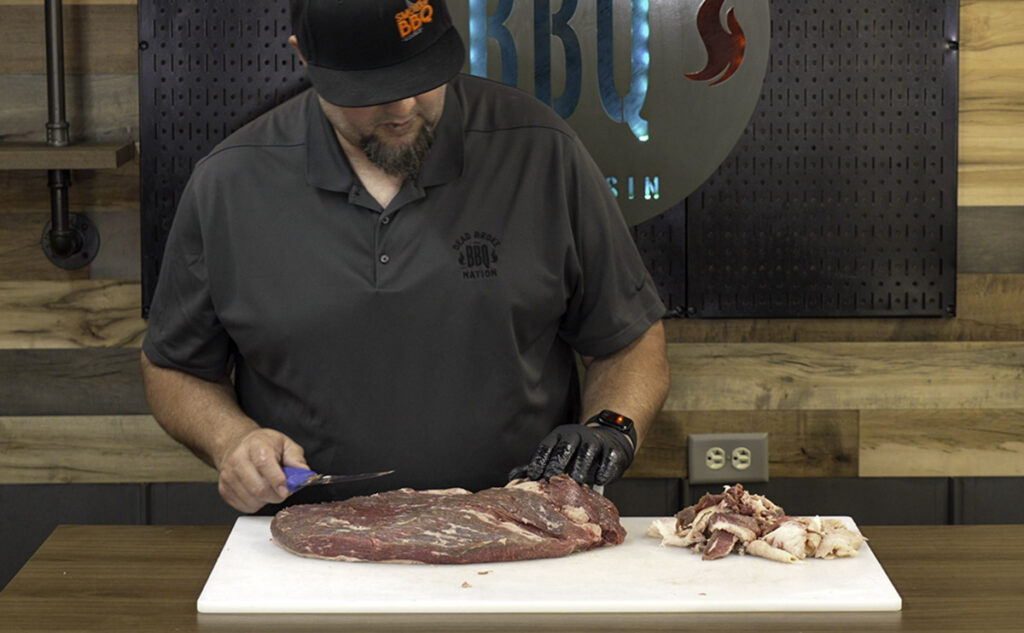
Some trim carefully. Others go at it like they are carving a watermelon. Too much fat, and the seasoning never reaches the meat. Too little and the flat dries out early. Uneven trimming also creates hot spots that burn before the rest catches up.
Fix it: Chilling the brisket for 30 minutes before trimming will make it easier to work with. Use a sharp boning knife and aim for a consistent quarter inch fat cap over the flat. Smooth, even trim lines help the fat render at the same rate.
21. Forgetting to Mark the Grain
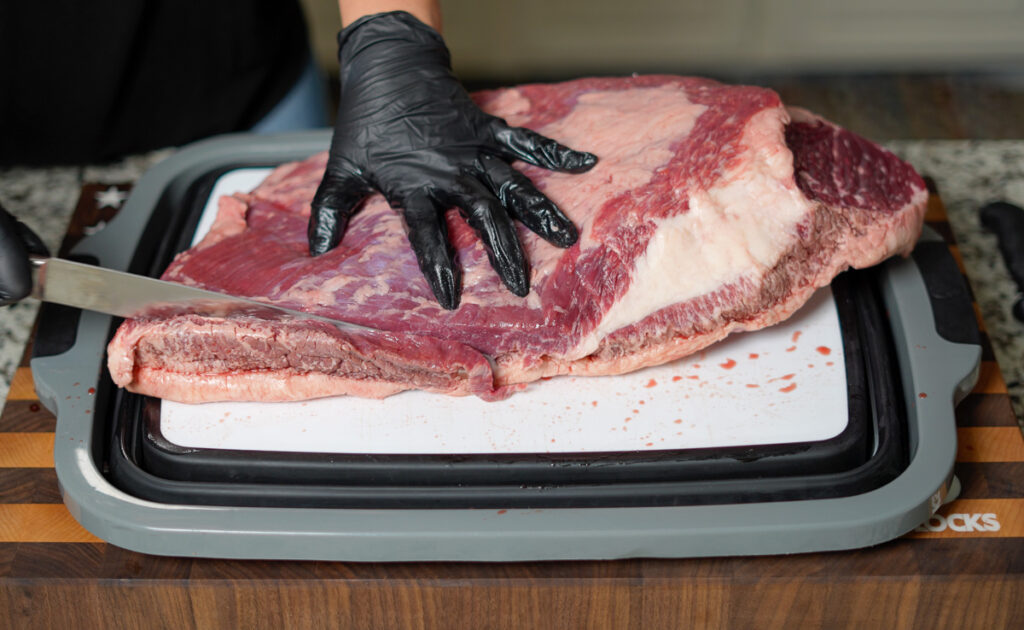
Once the brisket comes off the smoker looking like a meteor, the grain direction is no longer visible. People guess, slice wrong, and then wonder why the meat is chewy.
Fix it: Before seasoning, take a mental note (or photograph) of the direction of the grain. You could also make a small notch across the grain at the flat end. That tiny cut saves your whole slicing job later.
20. Only Using Salt And Pepper
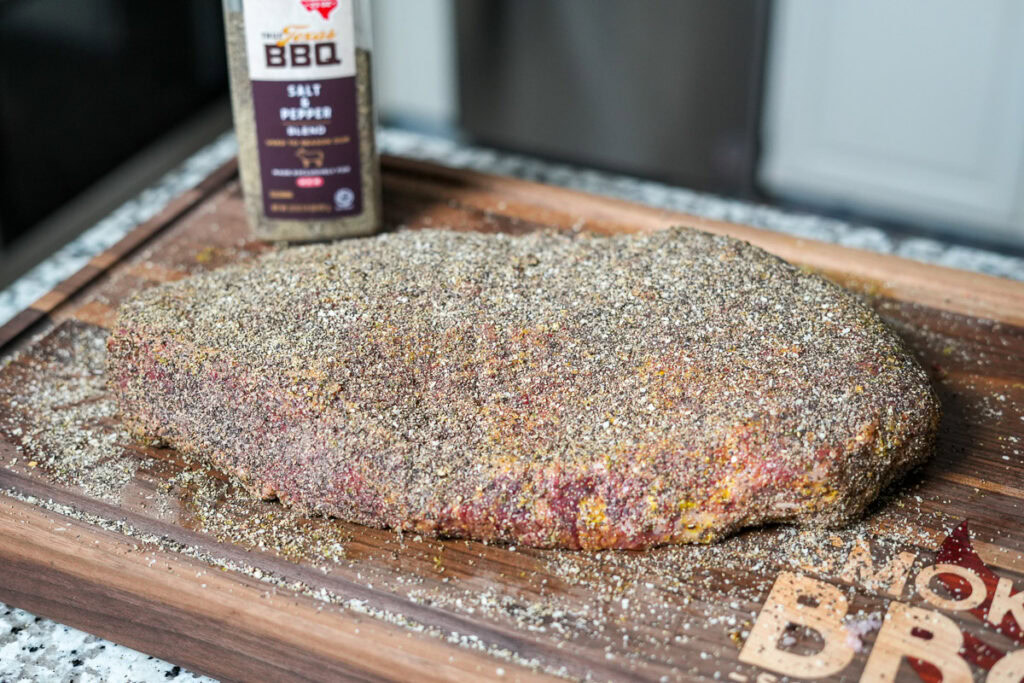
“Real Texas brisket is only salt and pepper.” You hear that repeated over and over, until using anything else feels like cheating.
That is BBQ extremism at its worst.
Many top Texas joints are not using plain salt and pepper. They quietly add seasoned salt or other simple spices to stack a bit more flavor. If Aaron Franklin and Goldie’s can admit to it, you do not need to feel guilty about using more than two ingredients.
Fix it: Start with a classic 50/50 salt and coarse black pepper base, then test small tweaks. Add a light dust of Lawry’s Seasoned Salt or a mix of granulated garlic and onion powder like in our ultimate brisket rub recipe.
19. Double Salting by Accident
This one sneaks up on people. You salt the brisket, then you add a store-bought rub that already has a heavy salt base. One bite and it feels like you seasoned the meat twice.
Fix it: Check the label on your rub. If salt is one of the first few ingredients, skip any extra salting.
18. Cooking at the Wrong Temperature for Your Smoker
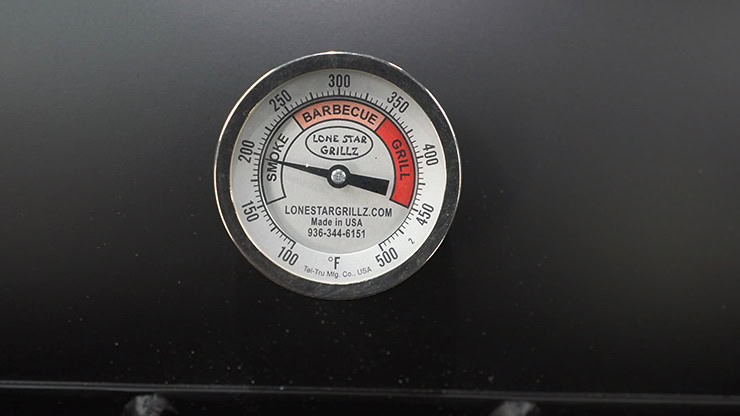
People copy temperatures from YouTube without thinking about their own cooker. A pellet grill at 225°F is not the same as an offset at 225°F. Airflow, heat direction, and fire behavior all change how the brisket cooks.
Fix it: Pellet grills and ceramic cookers often work best between 225 and 250°F. Most offsets perform better around 275°F. Know your smoker and cook to its strengths.
17. Putting the Fat Cap on the Wrong Side
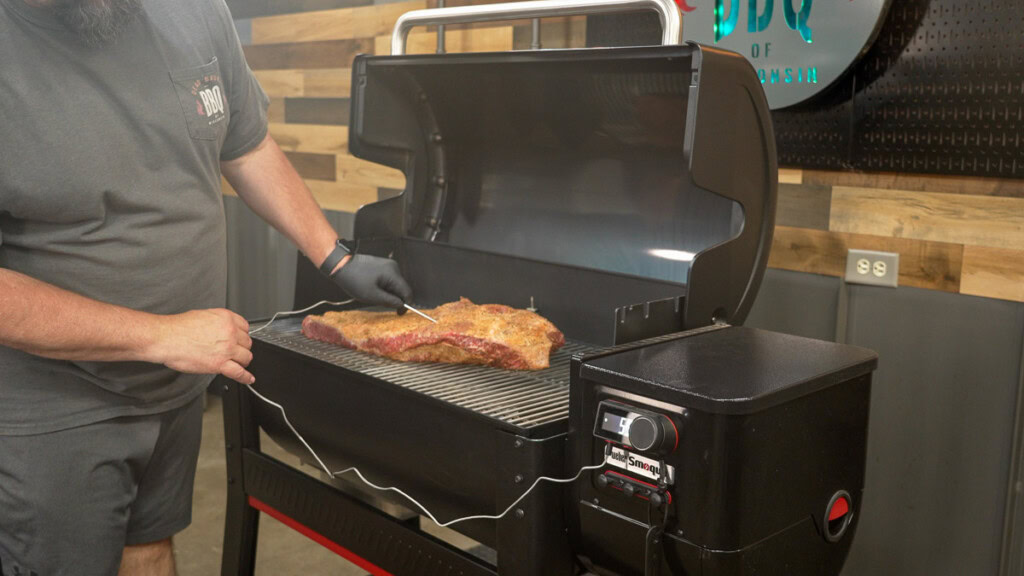
People argue endlessly about fat up or fat down. The truth is simple. Put the fat toward the heat source. That fat is there to protect the lean meat from direct heat. If you flip it the wrong way, the thin flat takes the punishment and dries out long before the point is ready.
Fix it: On a pellet grill, the heat comes from underneath, so fat side down. On most offsets, heat flows over the top, so fat side up. Follow the heat, not old forum advice. Always aim the Point end toward the heat source as well.
16. Relying on the Lid Thermometer

Built-in thermometers lie. Many read 30 to 50 degrees higher or lower than the actual temperature at grate level. Even high-end pellet grills take the average temperature across the pit.
That means you could be cooking at 300°F when you think you are at 250°F. No wonder the bottom burns or the flat dries out.
Fix it: Use a grate level probe thermometer. Cook based on the temperature the brisket actually feels, not the temperature printed on the lid.
15. Skipping an Instant Read Thermometer
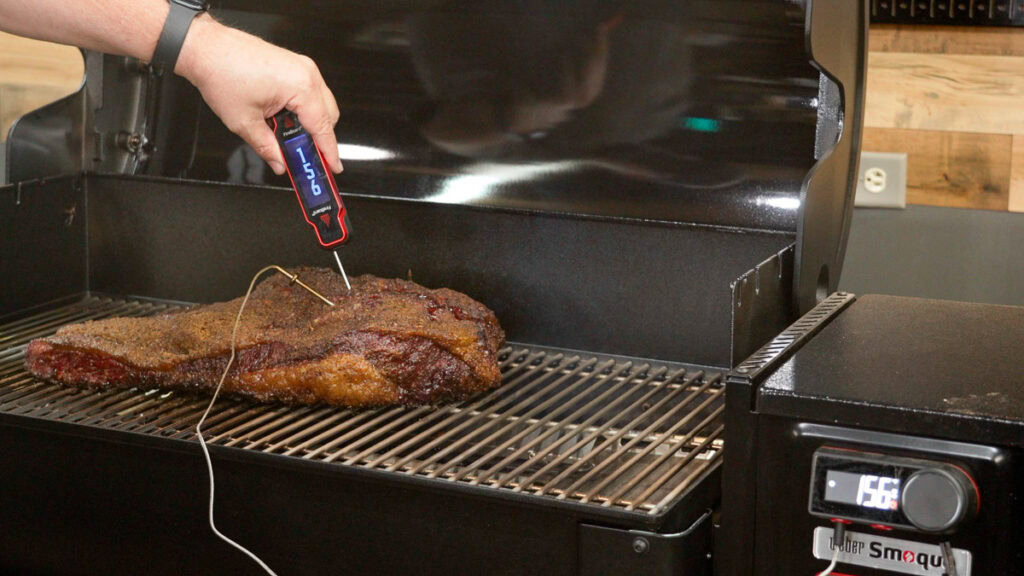
Many people believe they can gauge doneness by eye. They cannot. You need to check the temperature and feel. An instant-read thermometer allows you to gauge tenderness accurately. Without it, you are guessing your way into dry or undercooked brisket.
Fix it: Get a reliable instant read thermometer. Use it often. You will learn more in one cook than you did in ten.
14. Cooking With Thick White Smoke
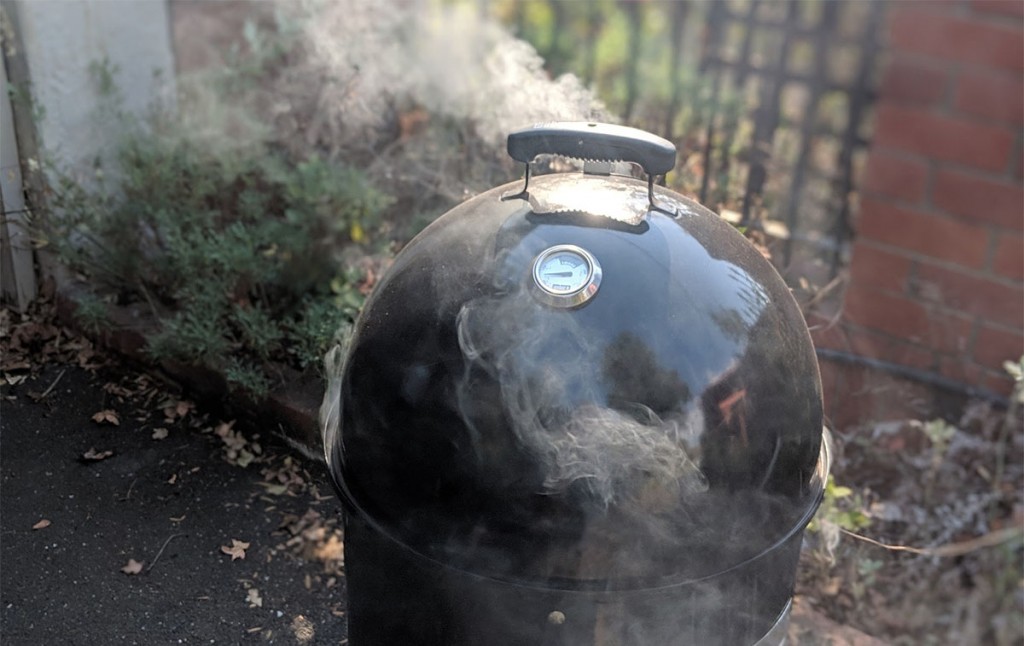
Good barbecue needs thin blue smoke. That means clean combustion. Thick white smoke means the wood is not burning properly. It coats the meat in soot and leaves everything tasting harsh.
Fix it: Adjust your vents, burn smaller splits, and give the fire room to breathe. Wait for the smoke to thin out before you add the brisket.
13. Opening the Lid Too Often
Everyone loves checking on their brisket. It feels productive. It is not. Each time you lift the lid, the temperature falls and the brisket cools down. You lose heat, momentum, and sometimes an entire hour of cooking time.
Fix it: Look once around the four hour mark. Look again near the end. Otherwise, keep the lid closed and let the pit do its job.
12. Spritzing at the Wrong Time and for the Wrong Reasons
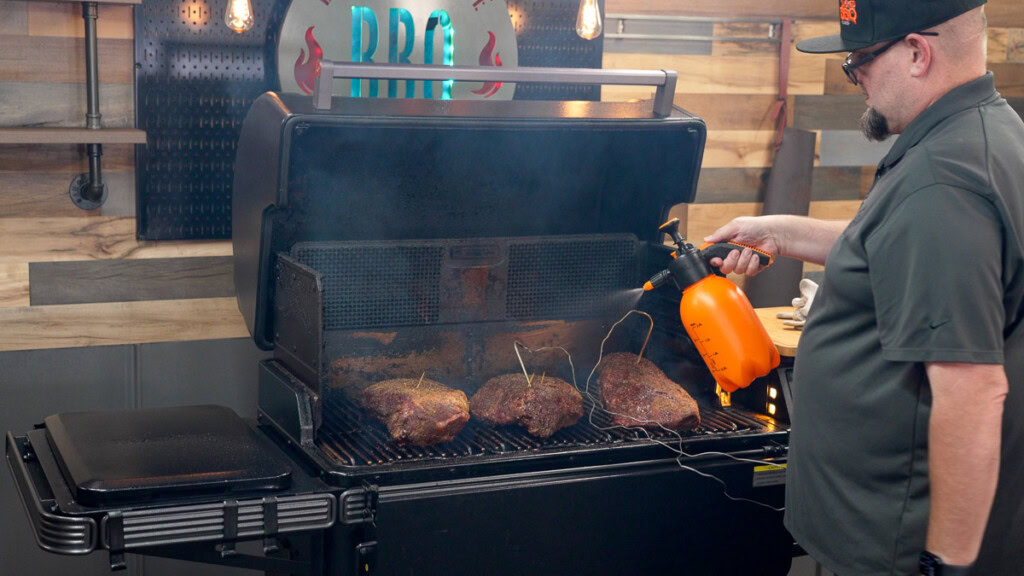
Spritzing may seem simple, but most people apply it in a way that actually harms the bark instead of helping it.
Spraying too early in the first few hours washes the rub off and slows everything down.
Another mistake is spraying the entire brisket every hour, thinking it keeps it moist. It does not. Brisket makes plenty of steam on its own, and heavy spritzing only softens the bark and adds no real benefit.
Fix it: Wait until the bark is set, usually after a few hours. Only mist the dry or crispy edges, not the whole brisket.
11. Never Checking Color or Bark Mid Cook
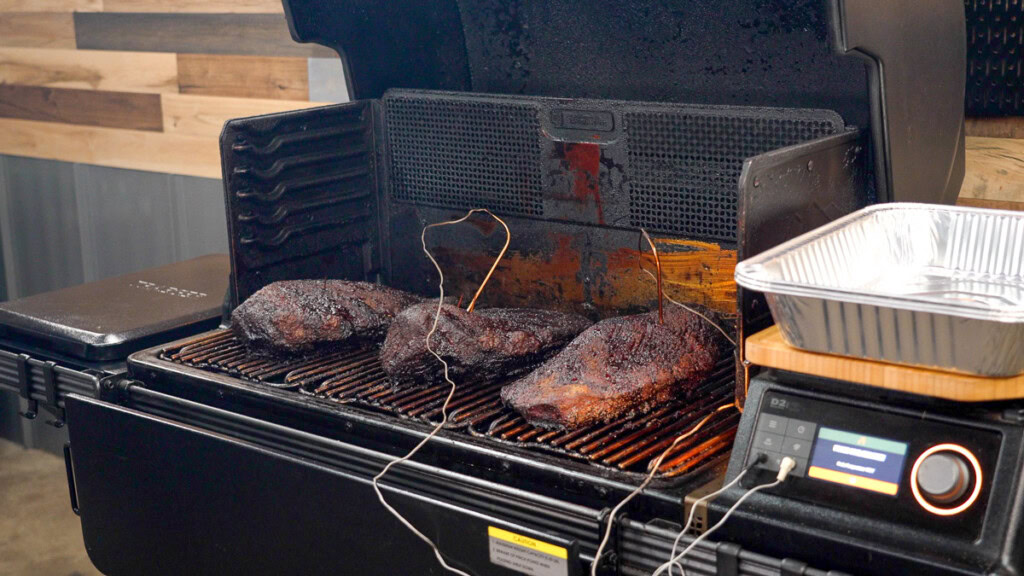
Some people never open the smoker until it hits a magic number. The problem is that brisket does not cook by the clock. If you do not check the bark, you risk wrapping too soon or too late.
Fix it: At the four to five-hour mark, take a quick look. If the bark is set and the color is deep and even, it is time to wrap.
10. Wrapping Too Early
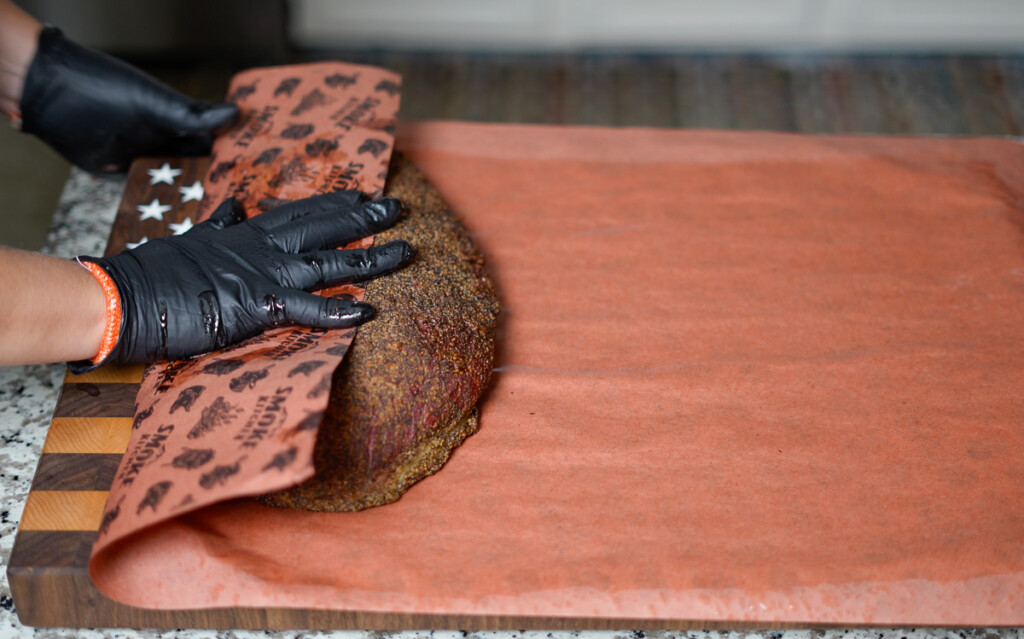
Wrapping too soon traps moisture before the bark has time to form. The rub gets soft, the bark goes muddy, and the brisket looks like it spent time in a steam bath.
Fix it: Wait until the bark is firm and the color is right. Ignore the clock. Go by feel and appearance.
09. Waiting Too Long to Wrap
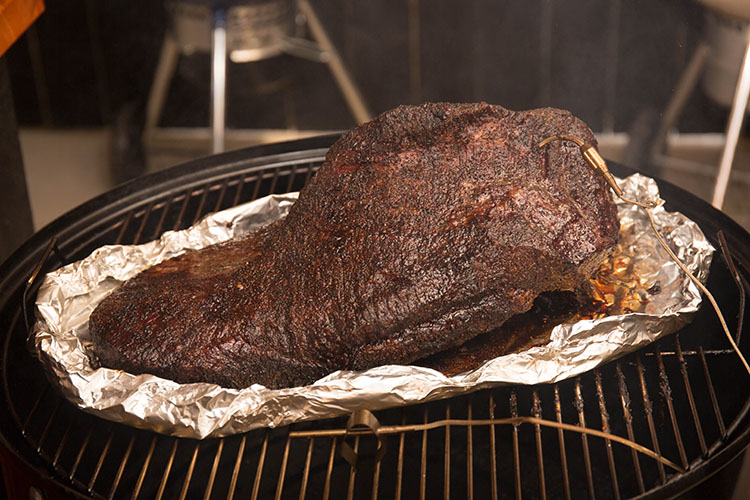
On the other end of the spectrum, some people refuse to wrap because they want a thick bark. That can work, but it also dries out the flat. Once the bark is ready, moisture loss accelerates fast.
Fix it: Wrap when the bark is set. Do not delay just for looks. You can still keep good bark with butcher paper.
08. Not Sealing the Wrap Tight Enough
Loose foil leaks steam and juices. Leaks turn the wrap into a half-effective barrier that gives you the worst of both worlds, soft bark and dry meat.
Fix it: Wrap tightly with heavy-duty foil or unlined butcher paper. Press it down firmly so it forms a seal.
07. Probing Through the Foil Too Soon
People poke through the wrap early and let all the steam escape. Worse, they poke a hole in the bottom and the juices drain straight into the smoker. Once that happens, you cannot get moisture back.
Fix it: Wait at least two hours after wrapping before checking. Then check gently to avoid tearing the bottom.
06. Rushing the Finish Because Guests Are Waiting
This is a barbecue rite of passage. The brisket hits the stall; the internal temperature stops climbing, and the clock keeps ticking. People panic because dinner time is getting close. They crank the heat to force it through the stall. Instead of getting tender, the flat dries out, and the whole brisket starts to taste like pot roast.
The stall is normal. When the brisket hits roughly 65 to 75 C the surface releases so much moisture that it cools itself. That pause can last one to three hours, sometimes longer. If you fight it by blasting heat you lose moisture fast and the tenderness never recovers.
Fix it: Start early, plan extra time, and let the brisket rest longer if it finishes ahead of schedule. If you are behind, smoke a few quick appetizers. Do not ruin the cook.
05. Not Checking Tenderness Across the Whole Brisket

Many briskets that look dry are actually undercooked. Beginners test one spot, get a perfect reading, and assume the whole thing is ready. But brisket never cooks evenly. The fat and collagen in the thickest parts may still be tight. When you slice, the meat feels dry because it has not fully broken down.
A brisket is only done when the entire flat, including the thickest middle sections, feels soft. One tender corner does not mean anything. If parts still grab the probe, it needs more time.
Fix it: Check tenderness in at least three places across the flat, not just one. Pull the brisket only when every spot feels soft and loose. Dry brisket is often brisket that needed another hour.
04. Skipping the Rest or Resting Too Short

Slicing straight off the smoker dumps juices everywhere. The meat needs time to calm down and absorb liquid back into the fibers. Skipping the rest leaves you with dry slices no matter how well you cooked it.
Fix it: Rest for at least one hour. Two or three is better. Keep the brisket wrapped and warm during the rest. A few old towels in a pre-warmed cooler can keep a brisket safe to eat for hours.
03. Slicing Wrong or Using a Dull Knife
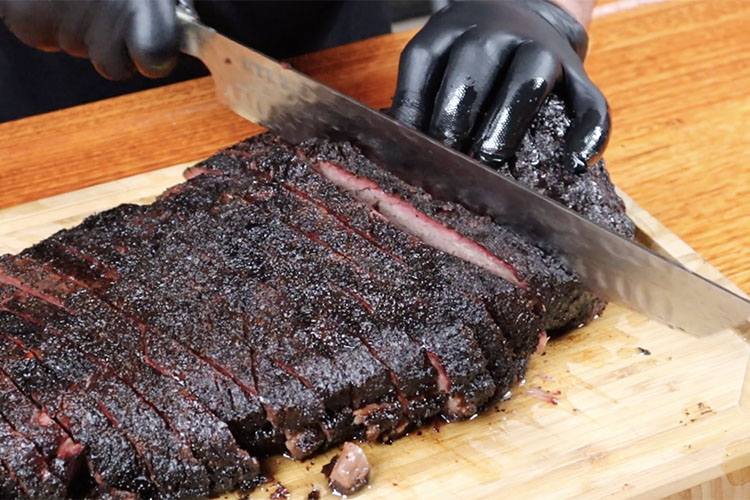
You can nail the cook and ruin it at the cutting board. Slice with the grain by accident and the meat chews like rope. Use a dull knife and you tear the bark apart instead of getting clean slices.
Fix it: Slice across the grain at a quarter-inch thickness. Use a sharp slicing knife, not a chef’s knife. Let the blade glide through without sawing.
02. Slicing the Whole Brisket Instead of Only What You Serve
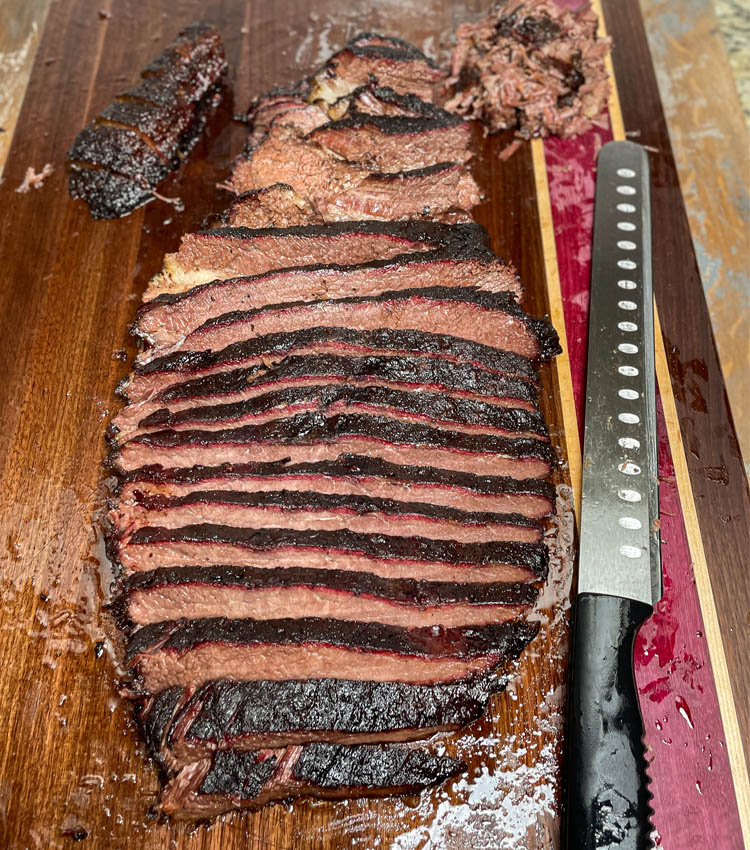
Once sliced, brisket loses moisture fast. People slice the entire thing for a crowd, then wonder why the leftovers dry out. Slices cool quicker, lose fat, and tighten up in the fridge.
Fix it: Only slice what you plan to serve. Keep the rest wrapped and warm. For leftovers, store the brisket whole or in large chunks and slice after reheating. This keeps the texture and moisture intact.
01. Squeezing the Brisket to Show Off the Juices
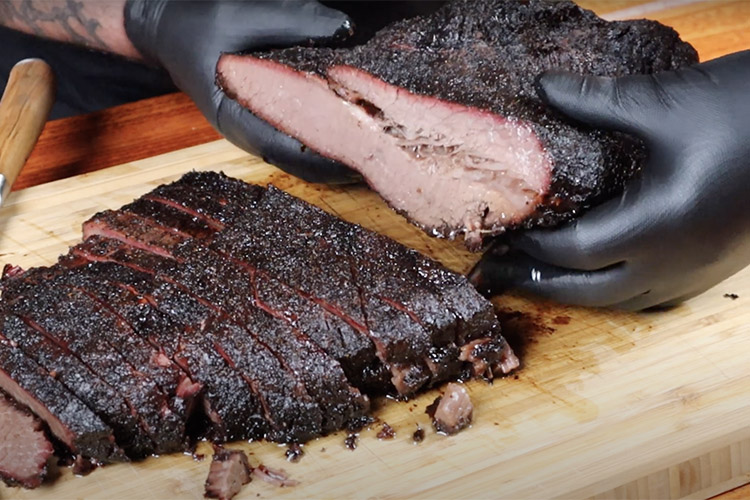
We’ve all seen the videos. Someone slices a piece of brisket, grabs it, and gives it a hard squeeze so the juices run everywhere. It looks impressive on camera, but it ruins the slice.
You are forcing moisture out that should stay inside.
Fix it: Use the bend test instead. Pick up a slice gently and let it hang. A properly cooked brisket will sag under its own weight and fold over your finger without tearing. No squeezing needed.
Your Path to Brisket Success
That is it. The mistakes that quietly ruin brisket and the fixes that make each cook more consistent. Use them and you will save money, save time, and get results you can be proud of.
Don’t forget to grab a copy of our free Mastering Brisket ebook with six step-by-step lessons to help you choose, trim, smoke, and slice brisket with confidence.
Let me know in the comments which mistake got you the most, or if there’s any we missed.
Did you miss our previous article...
https://manstuffnews.com/backyard-grilling/allpurpose-butter-dust-rub
 Backyard GrillingWeekend WarriorsAdvice from DadBeard GroomingTV Shows for Guys4x4 Off-Road CarsMens FashionSports NewsAncient Archeology World NewsPrivacy PolicyTerms And Conditions
Backyard GrillingWeekend WarriorsAdvice from DadBeard GroomingTV Shows for Guys4x4 Off-Road CarsMens FashionSports NewsAncient Archeology World NewsPrivacy PolicyTerms And Conditions
